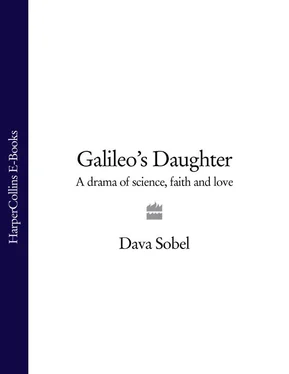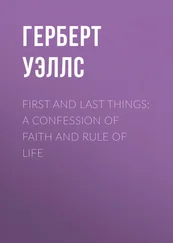In September of 1581, Galileo matriculated at the University of Pisa, where medicine and mathematics both fitted into the Faculty of Arts. Although he applied himself to the medical curriculum to please his father, he much preferred mathematics from the moment he encountered the geometry of Euclid in 1583. After four years of formal study, Galileo left Pisa in 1585, at the age of twenty-one, without completing the course requirements for a degree.
Galileo returned to his father’s house in Florence. There he began behaving like a professional mathematician – writing proofs and papers in geometry, going out to give occasional public lectures, including two to the Florentine Academy on the conic configuration of Dante’s Inferno, and tutoring private students. Between 1588 and 1589, when Vincenzio filled a room with weighted strings of varying lengths, diameters and tensions to test certain harmonic ideas, Galileo joined him as his assistant. It seems safe to say that Galileo, who gets credit for being the father of experimental physics, may have learned the rudiments and value of experimentation from his own father’s efforts.
Having impressed several established mathematicians with his talent, Galileo procured a teaching post at the University of Pisa in 1589 and returned once more to the city of his birth at the mouth of the River Arno. The flooding of the river in fact delayed Galileo’s arrival on campus, so that he missed his first six lectures and found himself fined for these absences. By the end of the year, the university authorities were docking his pay for a different sort of infraction: his refusal to wear the regulation academic regalia at all times.
Galileo deemed official doctoral dress a pretentious nuisance, and he derided the toga in a three-hundred-line verse spoof that enjoyed wide readership in that college town. Any kind of clothing got in the way of men’s and women’s frank appraisals of each other’s attributes, he argued in ribald rhyme, while professional uniforms hid the true merits of character under a cloak of social standing. Worse, the dignity of the professor’s gown barred him from the brothel, denying him the evil pleasures of whoring while resigning him to the equally sinful solace of his own hands. The gown even impeded walking, to say nothing of working.
A long black robe would surely have hindered Galileo’s progress up the Leaning Tower’s eight-storey spiral staircase, laden, as legend has it, with cannonballs to demonstrate a scientific principle. In that infamous episode, the weight of iron on the twenty-five-year-old professor’s shoulders was as nothing compared to the burden of Aristotelian thought on his students’ perceptions of reality. Not only Galileo’s classes at Pisa, but university communities all over Europe, honoured the dictum of Aristotelian physics that objects of different weights fall at different speeds. A cannonball of ten pounds, for example, would be expected to fall ten times faster than a musket ball of only one pound, so that if both were released together from some summit, the cannonball would land before the musket ball had got more than one-tenth of the way to the ground. This made perfect sense to most philosophical minds, though the thought struck Galileo as preposterous. ‘Try, if you can,’ Galileo exhorted one of his many opponents, ‘to picture in your mind the large ball striking the ground while the small one is less than a yard from the top of the tower.’
‘Imagine them joining together while falling,’ he appealed to another debater. ‘Why should they double their speed as Aristotle claimed?’ If the incongruity of these mid-air scenarios didn’t deflate Aristotle’s ideas, it was a simple enough matter to test his assertions with real props in a public setting.
Galileo never recorded the date or details of the actual demonstration himself but recounted the story in his old age to a young disciple, who included it in a posthumous biographical sketch. However dramatically Galileo may have executed the event, he did not succeed in swaying popular opinion down at the base of the Leaning Tower. The larger ball, being less susceptible to the effects of what Galileo recognised as air resistance, fell faster, to the great relief of the Pisan philosophy department. The fact that it fell only fractionally faster gave Galileo scant advantage.
‘Aristotle says that a hundred-pound ball falling from a height of a hundred braccia [arm lengths] hits the ground before a one-pound ball has fallen one braccio. I say they arrive at the same time,’ Galileo resummarised the dispute in its aftermath. ‘You find, on making the test, that the larger ball beats the smaller one by two inches. Now, behind those two inches you want to hide Aristotle’s ninety-nine braccia and, speaking only of my tiny error, remain silent about his enormous mistake.’
Indeed this was the case. Many philosophers of the sixteenth century, unaccustomed to experimental proof, much preferred the wisdom of Aristotle to the antics of Galileo, which made him an unpopular figure at Pisa.
When Vincenzio died in 1591 at the age of seventy, Galileo assumed financial responsibility for the whole family on a maths professor’s meagre salary of sixty scudi annually. (Professors in the more venerated field of philosophy made six to eight times as much, while a father confessor could earn close to two hundred scudi per year, a well-trained physician about three hundred, and the commanders of the Tuscan armed forces between one thousand and two thousand five hundred.) Galileo paid out dowry instalments to his newly married sister Virginia’s fractious husband, Benedetto Landucci, supported his mother and sixteen-year-old brother, Michelangelo, and maintained his sister Livia at the Convent of San Giuliano until he could arrange for her to be wed. By this time, his three other siblings had all died of childhood diseases.
Galileo lent his help ungrudgingly, even enthusiastically. ‘The present I am going to make Virginia consists of a set of silken bed-hangings,’ he had written home from Pisa just before her wedding. ‘I bought the silk at Lucca, and had it woven, so that, though the fabric is of a wide width, it will cost me only about three carlini [about one-hundredth of a scudo ] the yard. It is a striped material, and I think you will be much pleased with it. I have ordered silk fringes to match, and could very easily get the bedstead made, too. But do not say a word to anyone, that it may come to her quite unexpectedly. I will bring it when I come home for the Carnival holidays, and, as I said before, if you like I will bring her worked velvet and damask, stuff enough to make four or five handsome dresses.’
In 1592, the year after he buried his father in the Florentine church called Santa Croce, Galileo left Pisa for the chair of mathematics at the University of Padua. If he had to forsake his native Tuscany for the Serene Republic of Venice, at least he enjoyed a more distinguished position there and increased his income to 180 Venetian florins per year.
From the perspective of old age, Galileo would describe his time in Padua as the happiest period of his life. He made important friends with some of the republic’s great cultural and intellectual leaders, who invited him to their homes as well as to consult on shipbuilding at the Venetian Arsenale. The Venetian senate granted him a patent on an irrigation device he invented. Galileo’s influential supporters and quick-spreading reputation as an electrifying lecturer earned him rises that pushed his university salary to 300 and then to 480 florins annually. At Padua he also pursued the seminal studies of the properties of motion that he had begun in Pisa, for wise men regarded motion as the basis of all natural philosophy.
Читать дальше












